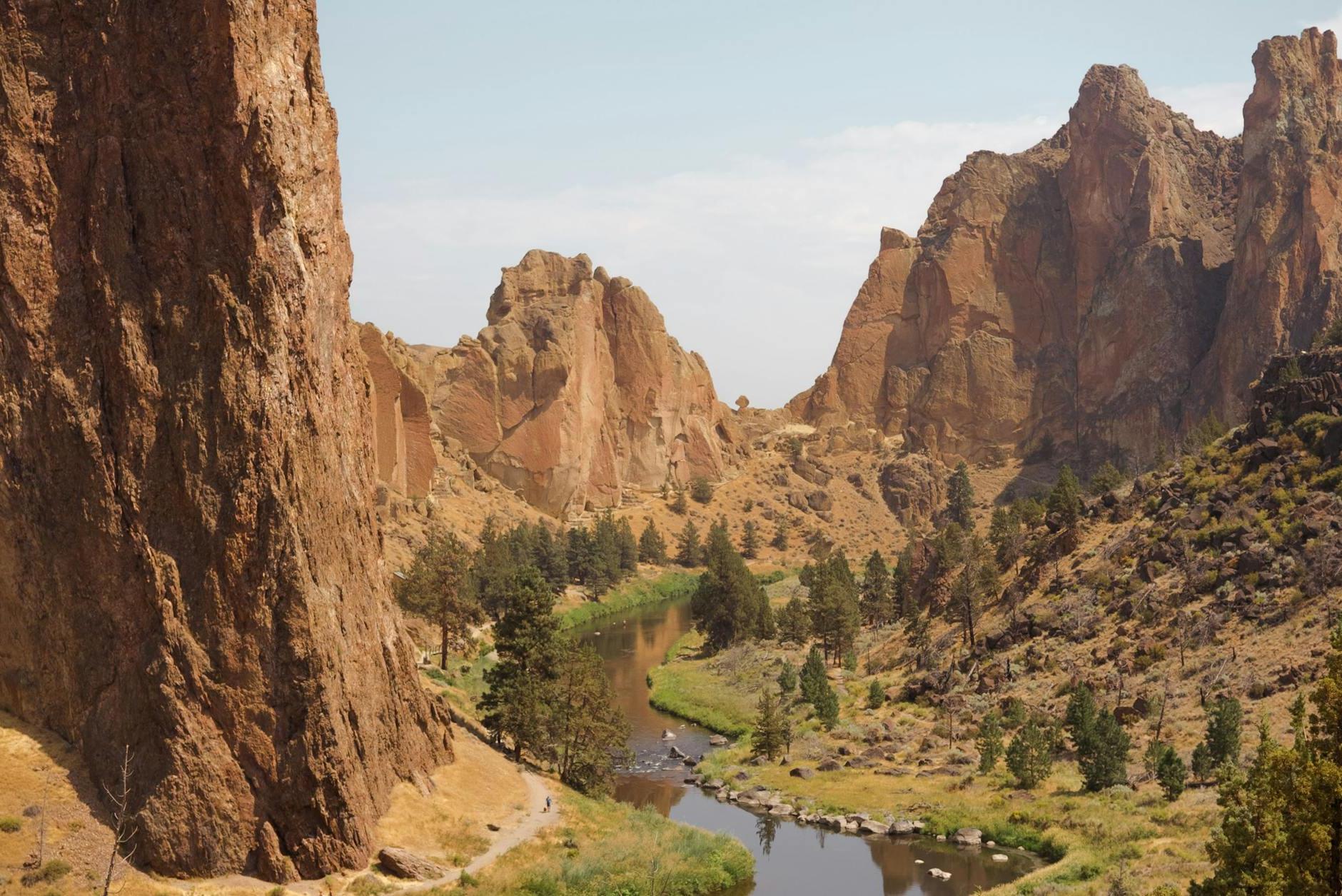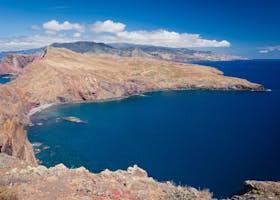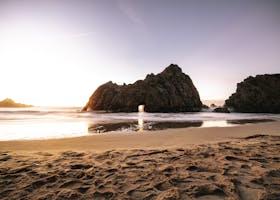Top 10 Must-See Destinations in Sequoia and Kings Canyon National Park
Posted on June 4, 2024 • 10 minutes • 2030 words
Table of contents
- 10 best things to see in Sequoia and Kings Canyon National Park
-
Frequently Asked Questions
- 1. What is the best time of the year to visit Sequoia and Kings Canyon National Park?
- 2. Should I rent a car in Sequoia and Kings Canyon National Park?
- 3. What are different ways to get to Sequoia and Kings Canyon National Park?
- 4. Are there things to do with children in Sequoia and Kings Canyon National Park?
- 5. Is Sequoia and Kings Canyon National Park safe to travel to?
Welcome to Sequoia and Kings Canyon National Park, where nature’s grandeur awaits at every turn! Nestled in California’s Sierra Nevada mountains, these parks are home to some of the tallest and oldest trees on the planet, along with breathtaking canyons, rivers, and diverse wildlife. While summer is the most popular time to visit, offering warm weather and full accessibility to trails and landmarks, there’s truly something for everyone all year round. Whether you’re a hiker, a camper, or simply a nature lover, get ready to explore the top 10 must-see destinations in this captivating natural wonderland!
10 best things to see in Sequoia and Kings Canyon National Park
10. Moro Rock
When visiting Sequoia and Kings Canyon National Park, you should definitely make a stop at Moro Rock. This massive granite dome offers breathtaking panoramic views of the park, including the Great Western Divide and the vast forest landscape below. To get there, you can drive to the Moro Rock parking area, located off the Generals Highway, and then it’s a short but steep hike up a stairway with 400 steps to the summit. Keep in mind that the climb can be strenuous, so wear sturdy shoes and bring water. Pay attention to the weather, as the steps can be slippery when wet, and always stay on the designated path for your safety. The effort is well worth it for the stunning photo opportunities and the unforgettable experience of standing on top of this iconic rock formation.
9. Hume Lake
If you’re visiting Sequoia and Kings Canyon National Park, make sure to check out Hume Lake. This stunning lake offers a peaceful retreat with its clear waters and beautiful surroundings. It’s perfect for fishing, kayaking, or simply relaxing by the shore. To get there, you’ll want to take Highway 180 from Grant Grove Village and follow the signs for Hume Lake. The road is well-paved, but it can get narrow and winding, so drive carefully. Pay attention to the weather, as snow can make the roads tricky during winter. Hume Lake is a great spot to soak in nature’s beauty, whether you’re hiking the trails or enjoying a picnic with family.
8. Zumwalt Meadow
Visiting Zumwalt Meadow in Sequoia and Kings Canyon National Park is a must for nature lovers. This serene spot offers breathtaking views of lush meadows, towering granite cliffs, and the peaceful Kings River. To get there, drive along the scenic Highway 180 until you reach the Road’s End area in Kings Canyon. From the parking lot, it’s an easy, family-friendly 1.5-mile loop trail that takes you through the meadow. Along the way, keep an eye out for wildlife like deer and birds, and enjoy the stunning rock formations. Don’t forget your camera, as the natural beauty here is picture-perfect!
7. Boyden Cavern
If you’re visiting Sequoia and Kings Canyon National Park, you should definitely add Boyden Cavern to your itinerary. This hidden gem offers a fascinating underground adventure with stunning stalactites, stalagmites, and flowstone formations that will leave you in awe. To get there, drive along the scenic Kings Canyon Scenic Byway (Highway 180) until you reach the Cavern, nestled in the Kings River Canyon. Keep an eye out for the small sign indicating the turn-off, as it can be easy to miss. Make sure you wear sturdy shoes for the short but steep hike to the cavern entrance and bring a light jacket since it’s a bit chilly inside. Guided tours are available, and they provide insightful information about the cave’s history and geology, making your visit even more enjoyable.
6. General Grant Tree
If you’re visiting Sequoia and Kings Canyon National Park, seeing the General Grant Tree is a must! This giant sequoia is one of the largest trees in the world and is often called the “Nation’s Christmas Tree” for its massive, awe-inspiring presence. To get there, head to Kings Canyon National Park and look for the General Grant Grove area. There’s a convenient parking lot nearby, and the tree is just a short, easy walk along a well-maintained trail. Keep an eye out for other notable sights along the trail, like the fallen Monarch tree that you can walk through and the charming Gamlin Cabin. Don’t forget your camera—this is one memory you’ll want to capture!
5. Cedar Grove
When visiting Sequoia and Kings Canyon National Park, make sure to include a trip to Cedar Grove on your itinerary. Cedar Grove offers breathtaking views of deep canyons, giant cliffs, and the powerful Kings River. It’s a fantastic spot for nature lovers, hikers, and photographers alike. To get there, take Highway 180, which will lead you directly into the heart of Cedar Grove. Be aware that the road is typically open from late April to mid-November, so plan accordingly. Keep an eye out for deer and bears—they’re commonly seen in this area. Don’t miss the chance to explore Zumwalt Meadow, enjoy a picnic by the river, or take a hike to Mist Falls for a rewarding view.
4. Kings River
When you visit Sequoia and Kings Canyon National Park, you definitely shouldn’t miss Kings River. This beautiful river offers stunning views, peaceful spots to relax, and great opportunities for fishing and picnicking. To get to Kings River, you’ll want to enter through the Kings Canyon entrance, which is accessible via Highway 180. Once you’re in the park, follow the road signs to Cedar Grove, where you’ll find the river running through the canyon. Pay attention to the weather and river conditions, especially in spring when the water levels can be high. Always stay on marked trails for your safety and to protect the natural environment. Enjoy the cool, refreshing water and the breathtaking scenery that surrounds it!
3. Crystal Cave
Visiting Crystal Cave in Sequoia and Kings Canyon National Park is like stepping into a hidden world of sparkling beauty. This marble cave is filled with stunning stalactites, stalagmites, and polished rock formations that shimmer in the cave’s cool, damp air. To get there, you’ll need to take a short, half-mile hike through a scenic forest trail that starts near the cave’s parking area, which is located off the Generals Highway. Be sure to wear sturdy shoes, as the trail can be steep and uneven in some places. Guided tours are the only way to explore the cave, so remember to book your tickets in advance. Inside the cave, it’s cool year-round, around 50°F (10°C), so bringing a light jacket is a good idea. Enjoy this underground wonder and don’t forget your camera (but keep in mind that flash photography isn’t allowed)!
2. General Sherman Tree
When you visit Sequoia and Kings Canyon National Park, you can’t miss the chance to see General Sherman Tree, the largest tree on Earth by volume! Standing at 275 feet tall and over 36 feet in diameter at the base, this giant sequoia is a natural marvel that will leave you in awe. To get there, drive to the Giant Forest area within the park and follow signs to the General Sherman Tree. There’s a parking lot nearby, and from there, it’s just a short hike on a well-marked trail. Pay attention to the information plaques along the trail; they offer fascinating insights about the age and ecological importance of the massive sequoia trees. Remember to bring water, wear comfortable shoes, and keep an eye out for wildlife along the way. Don’t forget your camera – you’ll definitely want to capture this monumental wonder!
1. Giant Forest
When you visit Sequoia and Kings Canyon National Park, make sure to check out the Giant Forest. It’s home to some of the biggest trees in the world, including the famous General Sherman Tree, which is the largest tree on Earth by volume! To get there, drive along Generals Highway until you reach the Giant Forest Museum—this is a convenient starting point. Once there, take the well-marked trails to enjoy stunning views of these massive, ancient trees. Be sure to wear comfortable walking shoes, bring plenty of water, and keep an eye on the weather, as it can change quickly. Don’t miss out on this awe-inspiring experience!
Frequently Asked Questions
1. What is the best time of the year to visit Sequoia and Kings Canyon National Park?
The best time to visit Sequoia and Kings Canyon National Park is from June to August. During these summer months, you can enjoy warm weather and full access to all park areas, including the famous giant sequoias. Hiking trails are clear, and all facilities are open. If you’re looking for a quieter and possibly cheaper time to visit, consider going in spring (April-May) or fall (September-October). In these shoulder seasons, the weather is cooler, crowds are smaller, and you might find better deals on lodging. Just keep in mind that some higher elevation roads and trails might be closed due to snow.
2. Should I rent a car in Sequoia and Kings Canyon National Park?
When visiting Sequoia and Kings Canyon National Parks, renting a car is generally a good idea. The parks are vast, and driving allows you to easily access the major attractions like the Giant Forest and Kings Canyon Scenic Byway. The roads within the parks are mostly paved and well-maintained, though they can be winding and narrow in some areas, so drive carefully. Traffic is usually light except during peak summer months, and parking is available at most key sites, although it can fill up fast on busy days. There are limited options for public transport; a seasonal shuttle service runs in some parts of Sequoia National Park, but it doesn’t cover all areas. Taxis and rideshares are also scarce, leaving a rental car as the most convenient way to explore these beautiful parks at your own pace.
3. What are different ways to get to Sequoia and Kings Canyon National Park?
There are several ways to reach Sequoia and Kings Canyon National Park. If you’re flying, the nearest airports are Fresno Yosemite International Airport (about 1.5 hours away) and Visalia Municipal Airport (about an hour away). From these airports, you can rent a car or take a shuttle to the park. Public transportation options include the Sequoia Shuttle, which operates in the summer and connects Visalia with the park, and the Amtrak train, which can take you to nearby cities where you can transfer to a bus or rental car. If you prefer to drive, you can head to the park from major California cities like Los Angeles (about 4.5 hours), San Francisco (around 4.5 hours), or Sacramento (about 4 hours) using major highways like the I-5 or CA-99 and then following signs to the park’s entrance. Each route offers scenic views and a variety of stops along the way.
4. Are there things to do with children in Sequoia and Kings Canyon National Park?
Absolutely! Sequoia and Kings Canyon National Parks are fantastic places to explore with children. You can start with the Giant Forest, home to the incredible General Sherman Tree, which is the largest tree on earth. Kids will love the easy walking paths and learning about these giant sequoias. There’s also the Junior Ranger program, which is a fun way for kids to earn badges while discovering the park’s wonders. For something extra fun, the Big Stump Picnic Area is a great spot for a family lunch, and the nearby stumps are like nature’s jungle gym! Don’t forget to check out Crystal Cave during the warmer months, where guided tours showcase stunning underground formations. There’s plenty to keep your little adventurers engaged and excited.
5. Is Sequoia and Kings Canyon National Park safe to travel to?
Sequoia and Kings Canyon National Park is generally safe to travel to, offering a beautiful and secure environment for visitors. Rangers actively patrol the area, and there are few reports of petty crimes or scams. However, as with any destination, it’s important to take basic precautions to ensure your safety. Keep your valuables out of sight, especially when in tourist-heavy or crowded areas, and always stay aware of your surroundings. By following these simple tips, you can have a safe and enjoyable visit to this stunning national park.




